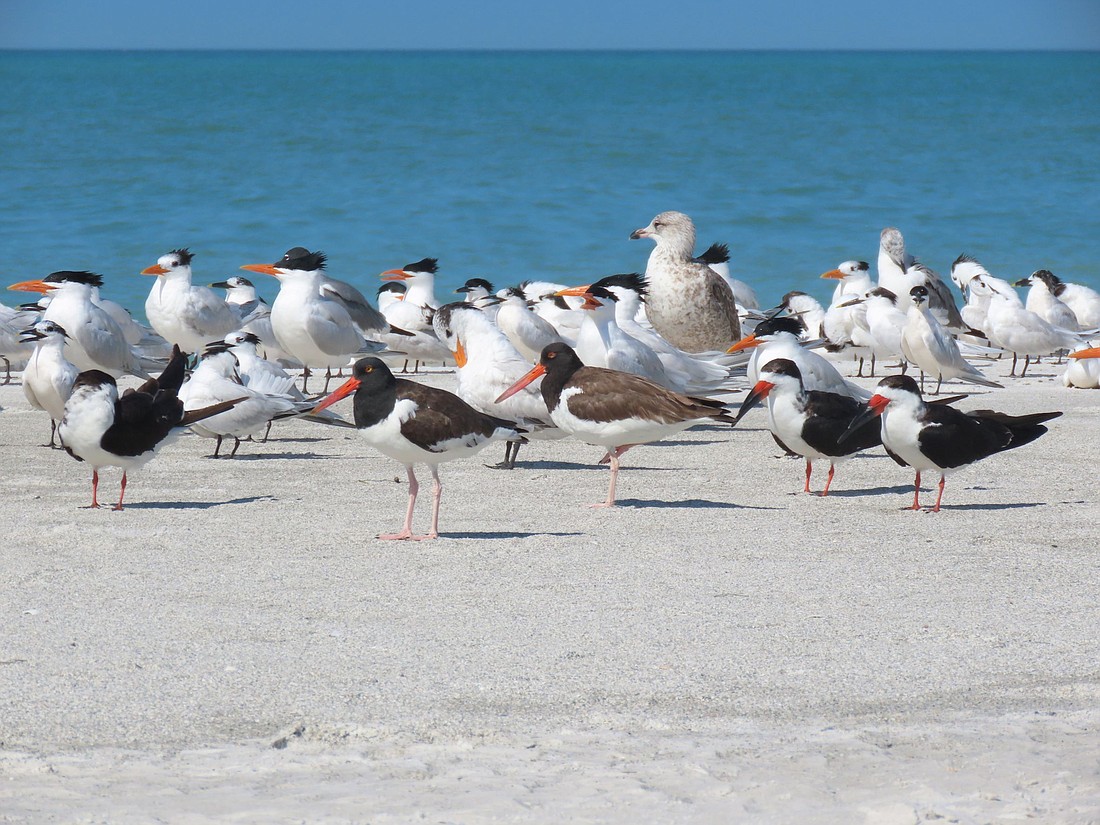- July 26, 2024
-
-
Loading

Loading

Easter may soon be upon us, but don’t go searching too hard for eggs on Longboat Key’s beaches. Nesting season for shorebirds like the least terns, black skimmers, snowy plovers and American oystercatchers is also fast approaching, and the birds need all the space humans can give them to safely start their families.
“The beach is their home and we have to be respectful when visiting,” Audubon Florida shorebird coordinator Kylie Wilson said. “The habitat has improved on north Longboat with the renourishment project and we’ve seen least terns nesting on renourished beaches in the past, so be on the lookout. … With the renourishment and all that extra habitat it’s very possible we will have nesting on that end.”
Wilson has started her surveys of Longboat Key and has noticed terns and oystercatchers without any nesting activity yet. Terns generally start nesting by the end of April and oystercatchers by the end of May.
Normally, there are skimmers that nest on Longboat Key and Lido Beach, so the terns and oystercatchers are newbies to the area. It’s too early to tell if they’ll nest on the Key, but Wilson is hopeful for the oystercatchers.
“We do have them hanging out on Longboat Key sometimes, but maybe it’s immature birds that aren’t ready to nest yet,” Wilson said. “We want to make sure they have a safe place to nest and be young 'uns and forage and rest on the beach.”
Make sure birds get about 10 feet of distance if passing them on the beach, even if there’s no nesting activity yet. If there is, contact Wilson at [email protected]. There is also a large group of birds on the north end of Longboat Key that are preparing to migrate from the area, so they need to conserve their energy. Skimmers nest in large groups and plovers try to camouflage themselves in pairs at the upland side of the beach. When mating activity starts, nests aren’t far behind.
“If you see birds jumping on top of each other or shaking fish at each other, that’s their (terns) mating ritual,” Wilson said.
Wilson is also doing public beach bird walks this season, starting at 9 a.m. on April 16 at the Main Lido Beach Pavilion.